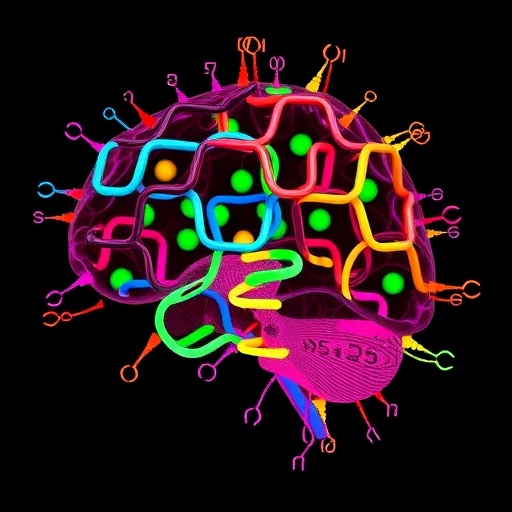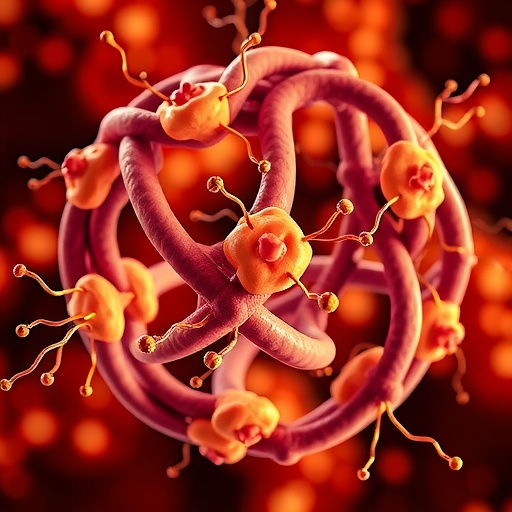In a groundbreaking advancement that could transform the landscape of treatment for neurodevelopmental disorders, researchers have unveiled a promising gene therapy approach targeting the underlying genetic deficits of SCN2A haploinsufficiency. This condition, a well-documented cause of neurological impairments including autism spectrum disorder, intellectual disability, and epilepsy, results from the loss-of-function in one of the two copies of the SCN2A gene, which encodes the critical sodium channel NaV1.2 involved in neuronal excitability. Employing a cutting-edge CRISPR activation (CRISPRa) system, the scientists successfully upregulated the remaining functional SCN2A allele in adolescent mouse models, rescuing both cellular and behavioral deficits associated with this genetic condition.
SCN2A haploinsufficiency has long posed a formidable challenge to neuroscientists and clinicians due to its complex pathophysiology and the critical timing of interventions, often thought to require early developmental treatment windows. The NaV1.2 sodium channel encoded by SCN2A plays an indispensable role in regulating the intrinsic excitability of neocortical pyramidal neurons, which are pivotal in information processing in the brain. Decreased NaV1.2 function leads to impaired action potential generation and synaptic transmission, manifesting in the diverse neurological symptoms observed in patients. The current therapeutic landscape offers limited options, often symptomatic rather than curative. This new approach leverages CRISPRa technology to enhance transcription from the healthy allele, effectively compensating for the loss of one gene copy without introducing exogenous genetic material.
The study’s first pivotal demonstration involved conditional knock-in mice harboring one inactive SCN2A allele (Scn2a^+/−). By restoring Scn2a expression during adolescence—a time point relevant to human therapeutic intervention—the researchers observed normalization of electrophysiological properties in cortical pyramidal cells. This included reinstatement of proper action potential firing thresholds and synaptic input response profiles, thereby correcting intrinsic and network-level deficits. These findings challenge the long-held dogma that neurodevelopmental disorders caused by gene insufficiency are irreversible in later stages of life, shining light on new treatment windows beyond infancy.
Transitioning from genetic models to practical clinical tools, the researchers ingeniously packaged the CRISPRa components into adeno-associated virus (AAV) vectors capable of delivering targeted gene activation machinery to the brain. Systemic administration of this AAV-CRISPRa treatment in adolescent Scn2a^+/− mice proved not only effective at reversing electrophysiological deficits but also robust in conferring protection against induced seizures triggered by chemoconvulsants. This dual functional rescue emphasizes the broad therapeutic potential of this gene-boosting strategy, notably for epilepsy control, a common and often refractory symptom in SCN2A-related neurodevelopmental disorders.
At the cellular level, the CRISPRa approach specifically targeted neocortical pyramidal neurons, underscoring the importance of cell-type specificity in therapeutic designs for complex brain disorders. By increasing the transcriptional output from the existing functional allele, the treatment circumvented pitfalls associated with traditional gene replacement therapies, such as immune responses or insertional mutagenesis risks associated with random viral gene integrations. Moreover, this approach maintained the endogenous regulatory context of the SCN2A gene, potentially mitigating dosage-related side effects.
Expanding this translational promise, the research team validated their CRISPRa platform in human stem-cell-derived neurons exhibiting SCN2A haploinsufficiency. Remarkably, treated human neurons demonstrated restoration of normal excitability patterns, paralleling observations in the animal models. This cross-species reproducibility strengthens confidence that CRISPRa-mediated upregulation could be a viable intervention for human patients, bridging a critical gap between bench-side discovery and bedside application.
Underlying this success is the intricate design of CRISPRa, which employs a catalytically dead Cas9 (dCas9) fused to transcriptional activators. This complex is guided by programmable single-guide RNAs (sgRNAs) to bind promoter or enhancer regions near the SCN2A locus, thereby recruiting the cell’s own transcription machinery and amplifying gene expression in situ. This nuanced control of endogenous gene activation distinguishes CRISPRa from cutting DNA, favoring precision and safety, which are paramount for clinical translation in neurological settings.
The implications of these findings are profound. They suggest the possibility of dynamic gene regulation therapies that can be initiated after early developmental phases, significantly widening the therapeutic window for numerous haploinsufficiency-driven neurodevelopmental disorders. Considering that SCN2A mutations rank among the most common single-gene causes of autism and epilepsy, this study heralds a new era of personalized, genetic-based treatments that might one day alleviate untold suffering for patients and their families.
However, challenges remain before human application can become mainstream. The long-term safety and efficacy of CRISPRa must be thoroughly evaluated, particularly regarding off-target activations and immune responses to AAV vectors. Furthermore, scalable delivery mechanisms across the human blood-brain barrier without invasive procedures require optimization. Future iterations may harness engineered AAV capsids or alternative delivery technologies to enhance brain-specific tropism and genome regulation finesse.
Despite these hurdles, this pioneering study provides compelling evidence that gene activation therapy for SCN2A-related conditions is feasible, safe, and therapeutically meaningful. It underscores the critical necessity of developing gene-modifying tools that go beyond traditional knockout or replacement models, focusing instead on enhancing residual gene function in a controlled, physiological manner. Such innovations are likely to have broad applicability across a spectrum of monogenic neurodevelopmental diseases beyond SCN2A.
As the field moves forward, integration with other emerging platforms—such as RNA-based therapies, epigenetic modulators, and precision neuromodulation—may further enhance therapeutic outcomes. Combining CRISPRa with behavioral therapies and targeted pharmaceuticals could provide a multifaceted approach to restoring neural circuitry and cognitive function in affected individuals.
In conclusion, the utilization of CRISPR activation to rescue SCN2A haploinsufficiency represents a paradigm shift in gene therapy for complex brain disorders. It highlights how precise modulation of endogenous gene expression can compensate for genetic deficiencies and ameliorate pathological phenotypes even during adolescent stages. This transformative research paves the way for innovative interventions that could redefine how neurodevelopmental disorders are treated, offering hope to millions affected worldwide.
Subject of Research: Gene therapy using CRISPR activation to rescue SCN2A haploinsufficiency in neurodevelopmental disorders
Article Title: CRISPR activation for SCN2A-related neurodevelopmental disorders.
Article References:
Tamura, S., Nelson, A.D., Spratt, P.W.E. et al. CRISPR activation for SCN2A-related neurodevelopmental disorders. Nature (2025). https://doi.org/10.1038/s41586-025-09522-w
Image Credits: AI Generated
Tags: autism spectrum disorder geneticsbehavioral deficits rescueCRISPR activation systemCRISPR gene therapydevelopmental timing of interventionsepilepsy genetic treatmentsintellectual disability gene therapyneurodevelopmental disorder researchneurological impairment therapiesneuronal excitability regulationSCN2A haploinsufficiency treatmentsodium channel NaV1.2 function





